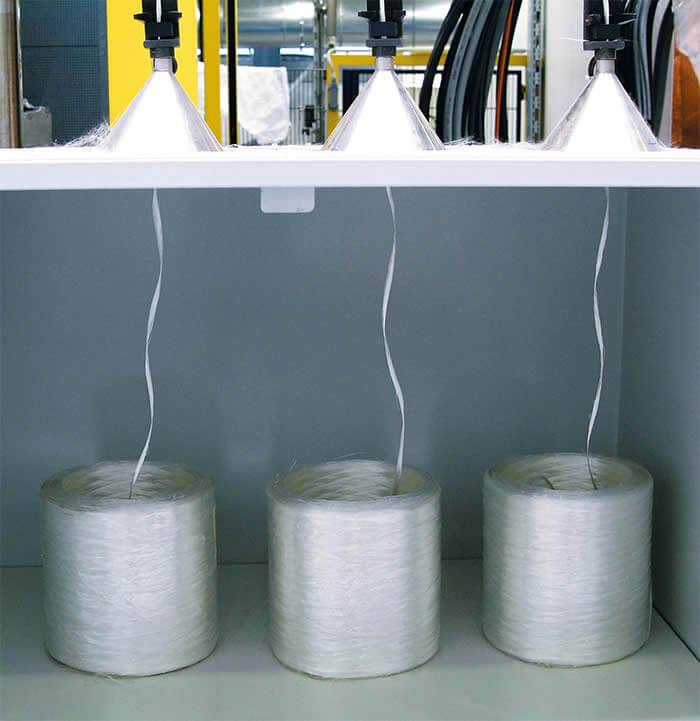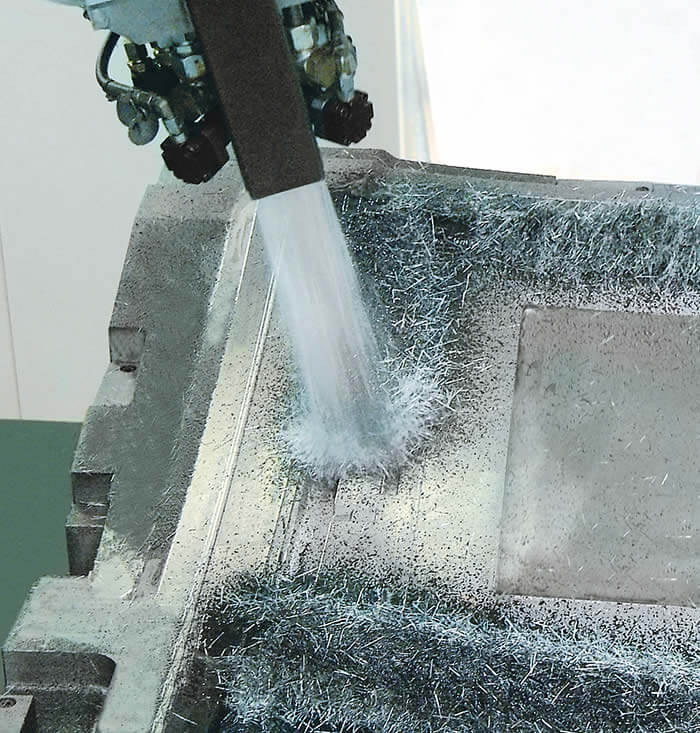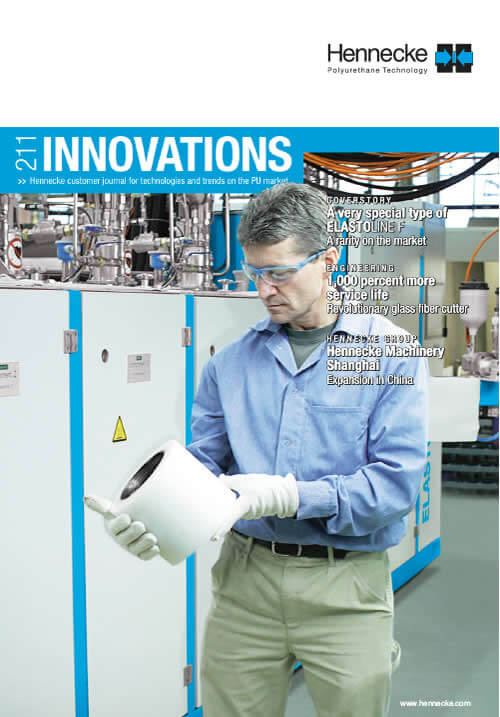1.000 percent more service life
Revolutionary glass fiber cutter
PUR-CSM is a recognized standard in the production of fiber-reinforced parts or compound mouldings. The modular setup and expansion of the CSM product portfolio is not only attractive to Hennecke customers thanks to new applications, but also because the CSM concept pays off when it comes to retrofitting equipment.
The latest example for this is a revolutionary cutting unit for CSM processing plants with chopped fiberglass metering system that has a ten times longer service life than other processes on the market because of a new cutting technique, thus significantly reducing downtime, maintenance and costs.
The use of chopped fiberglass in the form of glass fiber rovings when producing composite parts using the PU spray process as a continuous or selective reinforcement is often indispensable. Fiberglass rovings make for less expensive base material than semi-finished products. Moreover, less glass is wasted during processing and they do not have to be pre-formed as semi-finished products do. In the CSM process, glass fibers are cut to the desired length with a cutting unit that is attached directly to the mixhead. The Venturi effect that occurs when the fibers are metered directly into the spray jet provides optimal wetting and saves the user time since the mixhead does not have to be cleaned with solvents as is absolutely necessary in an integrated fiberglass metering process.
Customary cutting units cut the glass fibers to the correct length by using a knife roller which is next to a press roller. Due to the system, the knife roller and the integrated blades suffer from a relatively high degree of wear and tear, which is first made visible by the changed length of the chopped fiberglass and at a later stage can even lead to blades breaking. In the worst case, broken bits can end up in the part. Depending on the application, the roller has to be changed after less than a hundred kilograms of glass fibers have been cut. In cyclical or large-volume production this can result in significant downtimes and a loss of valuable working time because of subsequent maintenance. In the past, great importance was placed on changing components as fast as possible but any change under time pressure involves additional risks that jeopardize smooth production.
Hennecke GmbH’s composite specialists are now presenting a new cutter which is attractive in terms of service life and ease of maintenance, and thus enables fiber-reinforced composite parts to be produced in a more reliable and cost-efficient manner.
This is thanks to a completely new cutting process that needs neither a knife roller nor blades and therefore eliminates the main cause of downtime when cutting fiberglass rovings. The service life compared to standard cutters is increased by over 1000 percent and furthermore the process is only interrupted when the rovings are changed. The formation of atomized spray depositions is prevented thanks to the unit’s special geometry, which has been specially tailored to suit Hennecke's spray mixheads. And, as is characteristic of Hennecke, the advantages are not only for new customers to discover, but can also be enjoyed by existing customers. Thanks to the modular design, they can have the cutter retrofitted to their existing CSM spray mixheads in a fast and easy manner, regardless of whether these are already equipped with a chopped fiberglass metering system.
The possibility of combining different CSM modules with each other or retrofitting them is a typical characteristic of this processing technology. Thanks to its flexibility customers can make targeted investments without having to foresee the advance use of components that are not required for a current process. As a matter of fact, however, the competitive USPs of the mixhead technology are always inclusive. Thus, all CSM spray mixheads allow shots to be interrupted at any time during the spray process and the spray nozzle’s self-cleaning function ensures minimal maintenance and cleaning. Moreover, solvents are not needed at all which not only lowers production costs but reduces the environmental impact. Thus, CSM technology makes sense in both economic and ecological terms.





